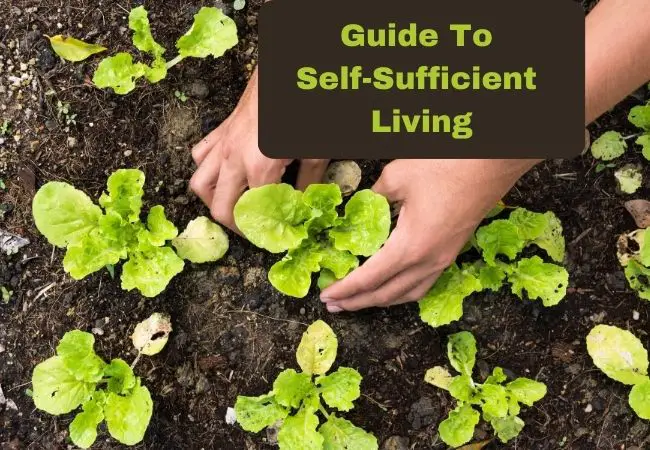Planting A Fall Vegetable Garden

Planting a fall vegetable garden doesn’t have to be hard. Garden fresh vegetables typically disappear after autumn, but with a little ingenuity you can still harvest them through the winter months.
While most gardeners in my region lose all the summer’s vegetable bounty, my garden continues to supply fresh vegetables through fall and winter months.
Planting A Fall Vegetable Garden
There are many easy things you can do to keep your garden alive during this chilly season. A few frosty mornings in the fall often lead to milder, frost-free days in the weeks that follow, but they can ruin every tender plant growing in the garden.
In any case, with a little protection, frost-sensitive vegetables and herbs can be supported to survive a cold snap and, in return, they will give gardeners an extended harvest.
Frost Protection
The same transparent, fleecy row cover that protects plants from insects is also effective against frost.
Row covers hold in warm air just like clouds do. They prevent frost from forming, just as they keep warm air from radiating up from the earth.
The use of row covers offers a degree of protection, keeping tender annuals and vegetables from light frost damage. The thicker grade row covers offer a greater degree of protection.
It should not be forgotten that even very hardy crops will require some protection from temperature drops once freezing conditions arrive.
Simple cardboard boxes, fruit baskets, and heavy plastic tarps can provide the needed shelter to individual plants. While old sheets, old blankets and old plastic tarps can be used to provide protection for entire rows or plant beds.
When freezing is forecast, the coverings should be applied at night and removed the next morning when the sun has warmed the air.
As an excellent option, you can also use a commercially available variety of cloche or set up a cold frame above a garden bed.
Cloches are in many cases heavy glass or round containers, or other kinds of rigid plastic tubes that are in different shapes or have different styles.
There is another type of cold frame called a hydroponic cold frame, which uses a tubular frame covered with a woven poly material that has openings inside to allow for ventilation.
Even stronger cold frames can be obtained with aluminum framing as well as twin wall polycarbonate panels that lift upward for ventilation.
After the plants have been protected, they must be uncovered or be allowed to breathe freely during the daytime as temperatures rise.
DIY gardeners can use old window sashes to form a makeshift cold frame by combining them with bales of straw.
Just enclose the growing area with straw bales, and attach the windows to the top to create an enclosed and well-insulated environment. This method will work well to maintain a bed of leafy greens until the beginning of spring.
Use Water
As an insulator, water and mist help protect trees from frost damage. Plastic containers filled with water filled in the gallon jugs can provide protection in the home garden.
The containers can be placed around the plants when you’ve got them under floating row covers or tarps, and put them into your cold frame.
The water stores heat during the day and gives it out at night to give your plants warmth.
If you use black jugs, this will soak up more energy from the sun during the day. Incredibly, even if the water inside freezes, the heat that’s released will continue to radiate.
Cold Tolerant Vegetables
Sowing cold tolerant vegetables in the summer allows them to flourish in the fall and withstand the harsh winters.
Good hardy fall vegetables are: Kale, broccoli, spinach, collards, and cauliflower. You can also grow brussels sprouts, kohlrabi, oriental greens, turnips, cabbages, rutabagas, and some lettuce varieties.
Leeks, kale, and collards can endure harsh winter conditions on their own in the garden.
Garlic and shallots, which are planted in the fall, will develop strong root systems, spend the winter underground, and then emerge with the arrival of spring.
Many root crops, including beets, carrots, turnips, and parsnips, can be left in the garden if you cover them with shredded leaves or straw.
If the ground doesn’t freeze and prevent digging, you can continue harvesting as needed. Be sure to finish before the spring arrives, though, since the quality will degrade once the roots resume growing and switch into an agricultural growth mode.
If you are hesitant or a beginner gardener you can try container vegetable gardening. You can move the containers inside during the winter months.
Related Posts:
Final Thoughts
So long as you have proper planning and the extra care you can easily grow, care for, and harvest vegetables in the fall and winter.
Implement only a few of the ideas in this article, and before long you’ll be enjoying your own homegrown fruits and vegetables for much longer than normal, possibly even for the whole year.
If this post on planting a fall vegetable garden was helpful, please share it and also follow me on Multigardening Pinterest for awesome vegetable gardening posts.






